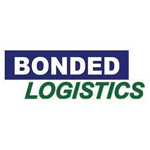23 Key Warehouse KPIs to Elevate Your Operational Efficiency
In warehouse management, efficiency is paramount, and key performance indicators (KPIs) are the benchmarks that measure success. This article cuts through the complexity to present the essential warehouse KPIs you need to track to. Discover how to apply these metrics to refine inventory control, speed up processes, and enhance overall warehouse productivity. Are you ready to transform your data into actionable insights for a leaner, more responsive operation?
Key Takeaways
- Warehouse KPIs are crucial for measuring operational efficiency and driving strategic planning, by evaluating timely shipments, optimizing space, and improving customer satisfaction.
- Key inventory management KPIs include inventory accuracy, turnover rate, and carrying cost, which inform decision-making on stock management to prevent stockouts and reduce storage costs.
- Technology, particularly Warehouse Management Systems (WMS), plays a significant role in tracking and optimizing warehouse KPIs, enhancing productivity, and ensuring accurate real-time data.
Understanding Warehouse KPIs
Think of warehouse KPIs as your compass leading you towards operational efficiency. They are metrics that assess, compare, and track the performance of warehouse operations, indicating how well business objectives are being met. These key performance indicators (KPIs) not only serve as a scorecard for your operational goals but also tie together various warehouse processes for strategic planning, including warehouse management kpis.
The benefits of monitoring and using KPIs in a warehouse are many. They help in:
- Evaluating timely shipments
- Tracking sale returns
- Optimizing warehouse space and operations
- Continuous monitoring of efficiency, productivity, and asset utilization
- Operational improvement
- Heightened customer satisfaction
Sounds promising, right? Let’s dive into the details and explore some of the critical warehouse KPIs, starting with those related to inventory management.

Inventory Management KPIs
Inventory management is the backbone of warehouse operations, one that requires careful monitoring and control. It involves three crucial KPIs – inventory accuracy, inventory turnover rate, and carrying cost of inventory. These metrics provide valuable insights into how effectively inventory is managed, influencing warehouse efficiency and profitability.
From preventing stockouts and minimizing storage costs to understanding the expenses related to stock, these KPIs play a pivotal role. They shed light on the financial impact of how long inventory can be stored before affecting profitability and how well the physical inventory matches the recorded inventory in a warehouse management system.
Now, let’s explore each of these KPIs in depth, starting with inventory accuracy.
Inventory Accuracy
Inventory accuracy is a measure of how well the recorded inventory aligns with the physical stock. It is crucial for warehouse operations as it prevents stockouts, minimizes storage costs, and optimizes inventory levels.
How to calculate it:
It is calculated by dividing the total correct inventory records by the physical count of stock in the warehouse, yielding a percentage that reflects inventory precision.
Target:
Aim for an inventory accuracy rate of 97-98%. Falling below 94% could indicate inefficiencies in warehouse operations and replenishment processes.
Maintaining high inventory accuracy is not just about counting stock accurately. It involves deploying technologies such as a Warehouse Management System (WMS), lot and batch tracking, and RF/barcode scanning. These technologies ensure real-time data availability and full traceability of materials, bolstering inventory accuracy.
Inventory Turnover Rate
Inventory turnover rate is another vital KPI that measures how frequently inventory is sold. It serves as an important metric for assessing a company’s sales performance and inventory management.
How to calculate it:
To calculate the inventory turnover rate, divide the cost of inventory sold by the average inventory value during the same period. This helps in measuring how quickly a company is selling its inventory.
Target:
A high inventory turnover ratio might suggest efficient inventory management and strong sales, while a low ratio could indicate weak sales or excessive inventory, which are detrimental to warehouse efficiency.
By analyzing the inventory to sales ratio, improvements in inventory turnover rate can be achieved by optimizing stock levels, reducing excess inventory, and enhancing sales strategies, thereby boosting warehouse efficiency and profitability.
Carrying Cost of Inventory
Carrying cost of inventory is a critical KPI that helps businesses understand the financial impact of holding inventory over a set period. It includes all costs associated with holding inventory, from tangible costs such as storage and handling to intangible costs like opportunity cost, deterioration, and obsolescence.
How to calculate it:
Calculating carrying cost involves dividing the total expenses for holding inventory by the total value of inventory, expressed as a percentage of total inventory value.
Understanding the carrying cost of inventory is essential as it provides insights into expenses related to stock and aids in optimized inventory management.
Target:
Optimal management aims to minimize these costs, ensuring inventory is stored no longer than profitability allows.
Inventory Turns
Inventory Turns is a key performance indicator that measures how often inventory is sold and replaced over a specific period. This KPI is essential for assessing the efficiency of inventory management and its impact on warehouse operations and profitability.
How to Calculate:
Divide the cost of goods sold (COGS) by the average inventory value. A higher ratio indicates efficient inventory management, while a lower ratio may suggest overstocking or slow-moving stock.
Target:
While the ideal turnover rate varies by industry, aiming for 6-8 turns per year is a good benchmark for many warehouses. Adjustments may be necessary based on specific operational goals and market demands.
Improvement Tips: Enhancing demand forecasting, diversifying product offerings, and optimizing supplier relationships can help increase inventory turnover, indicating a healthy balance between sales and inventory levels.
Receiving and Put-Away KPIs

Efficient receiving and put-away processes are critical to smooth warehouse operations. They form the foundation of the inventory lifecycle and directly influence warehouse efficiency, customer satisfaction, and profitability. Two key KPIs of these processes are receiving efficiency and put-away cycle time.
Receiving efficiency gauges the productivity of warehouse employees in the receiving area, while put-away cycle time reflects the average time it takes to store a single item. Efficient put-away processes lead to reduced storage and labor costs. Let’s delve deeper into these KPIs.
Receiving Efficiency
Receiving efficiency is a measure of how efficiently the receiving area of the warehouse operates. It calculates the productivity of the work being done by employees in this area. The receiving process encompasses:
- Pre-receiving tasks
- Unloading
- Checking
- Preparing for storage
All of these tasks are integral to determining receiving efficiency.
Target:
Achieving high receiving efficiency is not a one-time task. It requires strategic implementation of practices such as cross-docking, which allows fast-moving goods to be distributed swiftly upon arrival, thereby optimizing the receiving process. Improvements in receiving efficiency necessitate process enhancements or additional employee training.
Putaway Cycle Time
Putaway cycle time is another important KPI that influences warehouse operations. It measures the average time from receiving goods to storing them in their designated locations. A shorter putaway cycle time contributes to faster inventory turnover and signifies a more efficient warehouse putaway process.
How to calculate it:
Calculating put-away cycle time involves recording the start and end times of the process and utilizing KPIs like dock door utilization and total cycle time to identify efficiency improvements. Technologies like Automated Storage and Retrieval Systems (ASRS) can significantly reduce put-away cycle time by enhancing precision and speed in warehouse operations.
Picking and Packing KPIs

Picking and packing are at the heart of warehouse operations. They are critical steps in order fulfillment and directly affect customer satisfaction. Two key KPIs in these areas are picking accuracy and packing productivity.
Picking accuracy measures the precision of item picking in an order, while packing productivity gauges the effectiveness of packing processes. Both these KPIs play a significant role in reducing error-induced costs and enhancing the customer’s order fulfillment experience. Let us now delve deeper into these KPIs.
Picking Accuracy
Picking accuracy is a measure of the percentage of items correctly picked in an order. It is a critical performance indicator in the warehouse, as improvements or deterioration in this area can necessitate process enhancements or additional employee training.
Target:
Aim for a picking accuracy of at least 99%. Strategies to enhance picking accuracy include implementing voice-directed or augmented reality picking technologies, which can increase pick rates by up to 30%, and ensuring pickers are well-trained and equipped with efficient picking routes and tools.
Enhancing picking accuracy can also involve deploying strategies such as:
- Analysis of product velocity
- Effective slotting
- Zoning practices
- Optimized picking routes
These measures minimize wasted movement and backtracking, further improving picking accuracy and warehouse productivity.
Packing Productivity
Packing productivity is another vital KPI that impacts warehouse operations and warehouse performance. It involves strategies such as improving workstation layout and minimizing the motions required for packing, which can significantly reduce packing times and labor costs.
Target:
Best-in-class operations achieve packing productivity rates that minimize packing time while ensuring order integrity. Utilizing automated packing solutions and ergonomic packing station designs can significantly improve productivity.
Implementing 3D bin packing technology and minimizing the stock of packing materials can enhance packing productivity by reducing the time spent on managing supplies. Furthermore, packaging consolidation and conducting a packaging audit can provide insights into areas where packing productivity can be improved.
Shipping and Delivery KPIs

Shipping and Delivery are the final steps in warehouse operations, with a direct impact on customer satisfaction. Two crucial KPIs in this area are on-time shipment rate and order lead time.
The on-time shipment rate measures the percentage of orders shipped on or before the promised shipping date, while order lead time measures the time to fulfill a customer’s order from placement to shipment. Both these KPIs play a significant role in assessing customer satisfaction and improving order processing efficiency.
Now, let’s explore each of these KPIs in detail.
On-Time Shipment Rate
On-time shipment rate is a competitive advantage in crowded markets. Customers seek quick and reliable service, and a high on-time shipment rate distinguishes businesses from their competitors. It is a major factor in customer satisfaction, as prompt and undamaged deliveries make customers more likely to return for future purchases.
Therefore, the on-time shipment rate is not just about shipping goods on time. It is about winning customer trust and establishing a reputation for reliable service. In a world where customers have a plethora of choices, a high on-time shipment rate can be a game-changer.
Target:
Strive for an OTSR of 98-99%. Achieving this requires a well-coordinated effort between picking, packing, and shipping processes, alongside reliable carrier partnerships.
Order Lead Time
Order lead time is another crucial KPI that significantly impacts customer satisfaction. It measures the time to fulfill a customer’s order from placement to shipment. Delays in order lead time can lead to negative customer experiences and lower chances of repeat business.
Target:
Depending on the industry and product type, aim to keep order lead times within 2-3 days for standard orders, with options for expedited shipping.
Reducing order lead time involves several steps. From identifying and addressing bottlenecks in the packaging line to enhancing the supply chain through consolidating suppliers and enhancing partnerships, multiple strategies can help reduce lead times.
Ultimately, improved order lead times bolster operational efficiency and contribute to cost savings by preventing delays from causing disruptions through various business functions.
Fulfillment KPIs
Fulfillment processes are critical to warehouse efficiency and customer satisfaction. Tracking the right KPIs can help ensure that orders are filled accurately and efficiently. Here’s a closer look at essential fulfillment KPIs:
Order Fill Rate
Order Fill Rate measures the percentage of customer orders fulfilled from available stock without backorders or stockouts. It’s a direct indicator of inventory management effectiveness and customer satisfaction.
How to Calculate:
Divide the number of orders shipped in full by the total number of orders placed.
Target:
According to the Association for Supply Chain Management, a good target to aim for is a 97-98% fill rate. Rates below 94% may signal inefficiencies in inventory management or replenishment processes.
Order Fulfillment Timeliness
Order Fulfillment Timeliness assesses the speed from order placement to dispatch, reflecting on your warehouse’s responsiveness and operational speed.
Expectation: In today’s fast-paced market, fulfillment timeliness can range from 2-3 days to just hours, depending on the operational setup and customer expectations.
Picks Per Hour
Picks Per Hour is a productivity metric that evaluates the efficiency of the picking team, crucial for timely order fulfillment.
Benchmark: An average picker should manage between 120 and 175 picks per hour, with top performers achieving over 250. Implementing technologies like voice picking can enhance this rate by up to 30%.
On-Time In Full (OTIF)
On-Time In Full (OTIF) measures the percentage of orders delivered in full, on time to the customer, combining aspects of accuracy, completeness, and timeliness.
Goal: Strive for at least 98-99% OTIF to ensure high customer satisfaction and loyalty. Achieving high OTIF rates requires coordinated efforts across picking, packing, and shipping processes.

Warehouse Safety KPIs
Warehouse safety is a vital aspect that cannot be overlooked. It is crucial to protect the physical and mental well-being of employees and ensure processes comply with safety guidelines. Two key KPIs related to warehouse safety are the accident rate and equipment maintenance.
These KPIs provide insights into the safety conditions within the warehouse, guiding efforts to create a safe working environment. Let’s explore these KPIs in more detail.
Accident Rate
The Lost Time Incident Rate (LTIR) is a key metric used in warehouses to gauge the impact of workplace incidents that result in employees needing time away from work. A declining LTIR is typically an indicator of effective safety programs in the warehouse, suggesting that initiatives like safety training are yielding positive results.
Target:
The goal is to minimize the accident rate, aiming for zero incidents. Regular safety training, adherence to safety protocols, and the maintenance of equipment play pivotal roles in achieving this target.
Monitoring the accident rate is not merely about counting the number of accidents. It is about ensuring a safe work environment, reducing downtime, and maintaining productivity. After all, a safe warehouse is a productive warehouse.
Equipment Maintenance
Proper equipment maintenance is essential for warehouse safety. It extends the lifespan of warehouse equipment and ensures that machines are operating at optimal safety levels. Neglected maintenance can lead to machinery malfunction, increasing the risk of workplace accidents.
Target:
Achieve 100% compliance with scheduled maintenance activities to prevent equipment-related accidents and ensure operational continuity.
Implementing a comprehensive equipment maintenance program is crucial for maintaining a safe environment. This includes routine inspections, immediate repairs of faulty equipment, and preventive maintenance to detect issues early and prevent accidents. Well-maintained equipment is less likely to fail and cause accidents, contributing to a safer workplace and reducing injury rates.

Overall Throughput
Overall Throughput measures the total volume of goods processed and moved through the warehouse within a given timeframe, reflecting the efficiency of warehouse operations.
How to Measure: Track the number of units or orders processed over a specific period, such as daily or during an eight-hour shift.
Objective: Maximizing throughput indicates efficient use of resources and effective process management, aiming for continuous improvement to meet rising demands.
Replenishment
Replenishment focuses on the movement of inventory from backstock to picking locations to ensure products are available for order fulfillment without delay.
Efficiency Key: Monitor the speed and accuracy of replenishment activities. Effective replenishment strategies prevent overstocking and stockouts, ensuring optimal inventory levels.
Strategy: Implement dynamic replenishment methods based on real-time sales data and inventory levels to maintain operational efficiency and product availability.
Order Accuracy
Order Accuracy is crucial for customer satisfaction, measuring the precision of order fulfillment in delivering exactly what the customer ordered.
Calculation: Compare the number of orders shipped without errors against the total orders fulfilled.
Target: Aim for 99.5-99.9% accuracy. High order accuracy minimizes returns and exchanges, enhancing customer trust and reducing operational costs.
Dead Stock Management
Dead Stock Management involves identifying and addressing inventory that has not moved due to lack of demand, obsolescence, or damage, which ties up capital and space.
Management Practices: Regularly review inventory to identify dead stock. Implement strategies like discount sales or donations to free up warehouse space and recover investment.
Goal: Minimize dead stock to improve inventory turnover and operational efficiency.
Supplier KPIs
Supplier KPIs assess the performance of suppliers in terms of reliability, quality, delivery timeliness, and compliance, impacting the overall supply chain efficiency.
Key Metrics: Include supplier on-time delivery rate, quality acceptance rate, and response time to issues.
Importance: Strong supplier performance leads to smoother operations, fewer disruptions, and better product availability. Developing strategic partnerships with suppliers can drive continuous improvement and cost savings.
Leveraging Technology for KPI Tracking
In the digital age, technology plays a pivotal role in tracking warehouse KPIs. Implementing a robust warehouse management system (WMS) can significantly improve inventory accuracy by providing visibility and control over stock levels. A WMS should provide one of the crucial tools needed to track KPIs: a KPI dashboard.
Moreover, a WMS can also optimize warehouse flow, enhancing productivity, and increasing asset utilization by:
- Monitoring work processes at various levels
- Automating tasks such as picking, packing, and shipping
- Providing real-time data on inventory levels and locations
- Streamlining order fulfillment processes
- Integrating with other systems such as ERP and CRM
By leveraging the power of a WMS, warehouse managers can achieve greater efficiency and accuracy in their warehouse operations.
Moreover, next-generation warehouse technology, such as IoT and wearable tech, provides even greater efficiency, visibility, and the ability to track and monitor various warehouse KPIs in real-time. In essence, leveraging technology can turn your warehouse into a well-oiled machine, enhancing productivity, and ensuring accurate KPI tracking.
Read more: KPI Dashboard: 16 Tested Metrics

Implementing Continuous Improvement
In the quest for operational excellence, continuous improvement is the magic mantra. It is guided by the philosophy of Kaizen, which focuses on achieving incremental improvements through the involvement of all employees. The PDCA cycle (Plan, Do, Check, Act), a key tool in the Kaizen method, drives continuous improvement by:
- Planning
- Implementing
- Measuring
- Acting on feedback.

Implementing continuous improvement involves:
- Establishing a culture that promotes productivity
- Investing in quality training processes
- Recognizing top-performing employees
- Cross-training the warehouse workforce
- Applying standard measurements
- Listening to employees
These strategies help foster continuous improvement.
Enhanced productivity, optimized processes, and a safer workplace environment are some of the rewards of continuous improvement. Remember, the journey to operational excellence is not a sprint but a marathon, and continuous improvement is your loyal companion on this journey.
Boost Your Warehouse KPIs with Cadre Technologies
Elevating warehouse efficiency hinges on effectively managing KPIs, and Cadre Technologies delivers the solutions you need to excel. Our cloud-based Warehouse Management System (WMS) and LogiView supply chain visibility software are engineered to optimize your key performance indicators, from inventory accuracy to order fulfillment rates.
Key Advantages:
- Real-Time Insights: Gain immediate visibility into your warehouse operations, enabling swift decisions that enhance KPI performance.
- Scalability: Our solutions grow with you, ensuring your KPI management evolves alongside your business needs.
- Integration: Seamlessly connect with existing systems, ensuring a unified approach to KPI tracking and improvement.
Leverage Cadre Technologies to transform your warehouse KPIs into benchmarks of success.

Summary
Navigating the vast expanse of warehouse operations can be an overwhelming task. However, with the right compass of key performance indicators, the journey becomes smoother and more efficient. KPIs, from inventory accuracy and turnover rate to receiving efficiency and picking accuracy, serve as guiding metrics, driving warehouse operations towards excellence.
Remember, the pursuit of operational efficiency is an ongoing journey. Leveraging technology can aid in accurate and efficient KPI tracking, while continuous improvement ensures your warehouse operations remain agile and adaptable. As you embark on this journey, be prepared for challenges, but remember, every challenge presents an opportunity for improvement.
Embrace the future of warehouse management today. Discover how Cadre Technologies can transform your warehouse operations and help you achieve your strategic goals. Together, let’s redefine what’s possible in warehouse efficiency. Contact us to learn more.
Frequently Asked Questions
What is KPI in a warehouse?
KPI in a warehouse stands for key performance indicators, which allow you to track and benchmark improvements in warehouse performance over time. By measuring how effectively processes are reaching their goals, KPIs act as a report card for the warehouse.
How are warehouse KPIs measured?
Warehouse KPIs are measured by collecting data from warehouse operations, often through Warehouse Management Systems (WMS) and manual tracking. This data is analyzed to calculate KPIs, such as inventory accuracy or on-time shipment rate, helping managers assess performance and identify improvement areas.
What is the best KPI in logistics?
The best KPI in logistics depends on the specific goals and objectives of the company. Tracking KPIs like on-time delivery, order accuracy, and cost per mile can provide valuable insights into the efficiency of logistics operations.
What is the significance of inventory accuracy?
Inventory accuracy is crucial as it prevents stockouts, reduces storage costs, and optimizes inventory levels by aligning recorded inventory with physical stock.
How do you measure productivity in a warehouse?
Productivity in a warehouse is measured by tracking efficiency metrics like picks per hour, order fulfillment rate, and inventory turnover rate. These figures, often facilitated by technology like WMS, enable the evaluation of operational efficiency and the identification of process optimizations.










